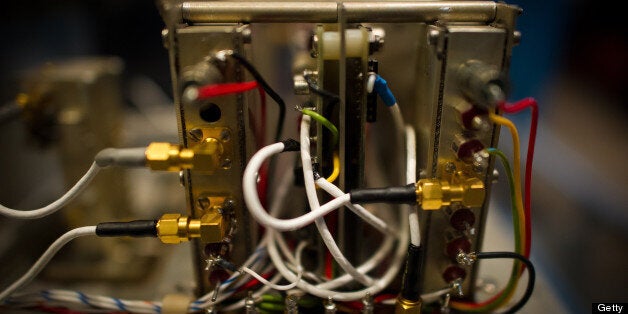
A new clock, which is accurate to within one minute every 18,000 million years, could 'redefine the second', scientists have claimed.
The most accurate devices currently used to measure the second are atomic clocks, which are based on the amount of energy required to "spin" an atom of caesium.
Under the international definition - established in 1967 - a second is counted when 9,192,631,770 oscillations of radiation are emitted by a caesium atom, using an apparatus called a "caesium fountain".
In 2011 it was announced that the UK's atomic clock was the most accurate in the world, and would only lose or gain a second every 138 million years - though that record has since been surpassed.
But French researchers now say they have smashed the record again, by studying a new 'optical lattice clock' and proving that it is more than twice as accurate as atomic clocks.
(In fact is has an accuracy of about three parts in 10 quadrillion.)
The new system demonstrated by Jérôme Lodewyck and his team at the Paris Observatory relies on using laser beams to "excite" atoms of strontium.
The clock traps many thousands of atoms in an 'optical lattice' (described amusingly by Nature as an "electromagnetic egg box") and takes an average reading from each, rather than a single atom.
And because lasers are able to oscillate faster than microwaves - technically it is the waves which are counted in atomic clocks and not the atom itself - then it is possible to divide time into smaller intervals, and thus be more precise.
The hyper-accurate clock is not just a theoretical or esoteric triumph, either. One potential use involves measuring red shift - or how time appears to be affected by gravity - and that could lead to big improvements in experimental physics.